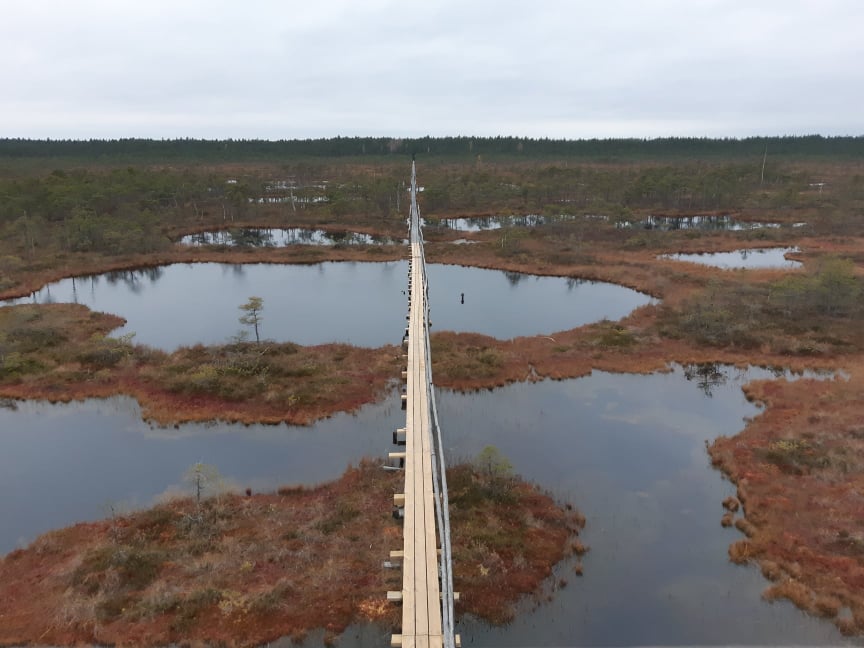Estonia has had favourable conditions for the development of mires, and a great diversity of mires has developed here
Mires are ecosystems where some of the organic matter created by living organisms at the expense of solar energy does not decompose and is deposited as peat, and the vegetation cover has no contact with mineral soils due to the peat. If a layer of peat has already formed in excessively moist hollows, but it is so thin that the roots of the plants extend through the peat into the mineral soil, the areas are paludified. However, if the continuous formation of peat ceases, the mire as an ecosystem will also be destroyed.
The rate of peat formation depends on the rate of decomposition of plants. Ferns and horsetails decompose fast, sedges and cottongrass at an average pace, and peat moss and shrubs (heather, bearberry, marsh Labrador tea) decompose the slowest.
Mires are formed mainly as a result of the process of paludification. Deviations in the water regime cause paludification: as precipitation, more water enters the ground than can evaporate or flow away, which causes the soil to become saturated with water and the growth of mire plants begins. The latter, in turn, causes the water to not run off.
As mires are mostly too moist, only moisture-loving plants can grow there. The growth of mire plants is hampered by low water mobility and lack of air.
Mires can be divided into minerotrophic fens, mixotrophic (transistional) fens, and bogs according to their stage of development.

In Estonia, mires cover about 6% of the land
As the conditions for the development of mires in Estonia have been favourable, a great diversity of mires has developed here. Peatlands make up about 22% of the Estonian land areas. They are parts of the landscape covered by any thick peat deposit, regardless of whether peat deposition continues, is interrupted, or whether the peat is already decomposing. However, not all peatlands are mires.
The mire is a peatland in its natural state, where the thickness of the peat layer is more than 30 cm and the deposition of peat has not been interrupted [1].
Mires are formed as a result of the overgrowth of water bodies or paludification of mineral land. The formation of mires is facilitated by humid climate, waterproof soil, low relief, and high groundwater level. In Estonia, mires began to form after the end of the ice age, and it takes about 1,000 years for one metre of peat to form in Estonia [2].
Last modified: 08.11.2021
_______________________________________________________________________________
[1] http://www.soo.ee/pohimoisted, Kaitstavate soode tegevuskava aastateks 2016-2030.
[2] http://www.soo.ee/sood-eestis